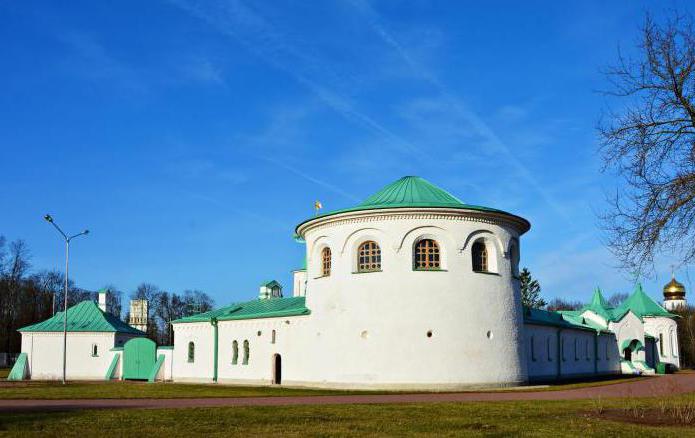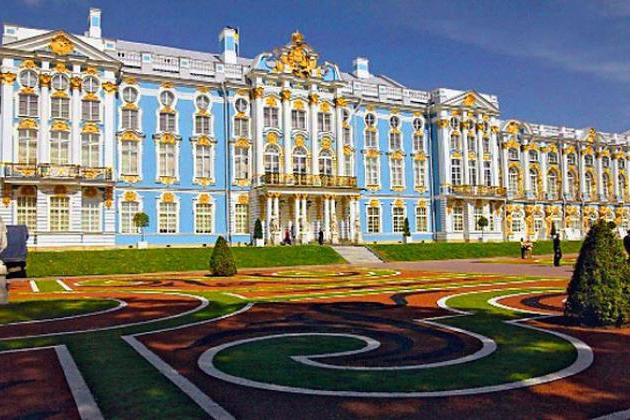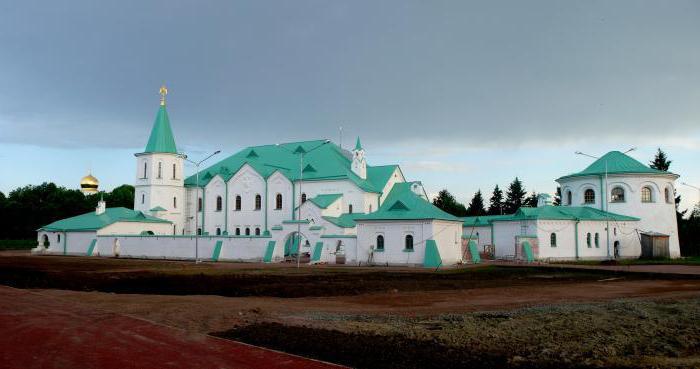The family of the emperor of All Russia for more than two decades lived in Tsarskoye Selo (now the city of Pushkin, St. Petersburg), occupying the Alexander Palace. This elevated the status of a small town to an unofficial second state capital. Therefore, before the First World War, Tsarskoye Selo was widely used for the construction of public and administrative buildings, barracks and temples. Thus arose a complex united by a common neo-Russian architectural style. Perhaps the main part of these buildings is the Sovereign Military Chamber. What it is? Our article will tell about the interesting history of the building. Interestingly, the building was originally built as a museum collection. The Military Chamber, without a doubt, can be called the pantheon of military glory, because the exposition was dedicated to the military feats of the Russians. And now in the building there is a museum dedicated to the horrors of the First World War.
Grounds for construction
In the nineteen-eleventh year, the widow of the founder of the famous Tretyakov Gallery, Elena Tretyakova, gave Nicholas II an interesting collection. The selection of artifacts was united by the theme of the wars that the Russian army has ever waged. Where should all these cards, trophies, ancient weapons be placed? And the emperor ordered to build a museum building under the collection presented to him, which it was decided to give the name "Sovereign Military Chamber". They decided to build it near the northern wall of the Alexander Park, next to the Fedorovsky town. The first stone was laid on the sixteenth of May, one thousand nine hundred and thirteenth, in the presence of Nicholas II. It is noteworthy that the construction of the museum was carried out at the expense of the donor, Elena Andreevna Tretyakova.
The complex of Feodorovsky town and neo-Russian style
The author of the building project is the eminent architect S. Yu. Sidorchuk. All details were agreed with the emperor and the commission. The architect wanted the Sovereign Military Chamber to fit into the complex of buildings that at the turn of the nineteenth and twentieth centuries began to be built in Tsarskoye Selo. All of them were united by one architectural style. It was necessary to show the continuity of Russia with the glorious past of the Slavs and at the same time to modernize the appearance of the buildings, which were supposed to serve administrative and public needs. And so the neo-Russian style emerged , which is a connecting bridge between the past and the future. The architect took the Pskov-Novgorod buildings of the fourteenth and sixteenth centuries as a model for the House of War. After all, the territory of Tsarskoye Selo was once part of an independent principality. At the same time, elements of Novgorod architecture were applied in the nearby Feodorovsky Cathedral. Thus, the two dominant buildings of the architectural complex miraculously harmonized with each other. Construction was completed only in the summer of the seventeenth year.

The Military Chamber Complex
The construction of the museum was approached with all seriousness. The widow of Tretyakov, the chief philanthropist, spared no money. Sovereign's Chamber of Commerce was to become one of the key buildings of Tsarskoye Selo. The layout of the building is based on an irregular polygon with an extensive courtyard. The dominant feature in the Military Chamber is the main two-story building. It is easy to recognize by the relief image of the double-headed eagle on the facade. An octagonal three-tier turret, crowned by a high dome-tent, adjoins this main building. Such an attempt to combine the breech building with an exclusively decorative element is the highest manifestation of the neo-Russian style. The turret seems to refer the viewer to the glorious times of the medieval past, linking the pragmatic values of the twentieth century with the spiritual aspirations of Holy Russia.
Pantheon of Russian Glory
Initially, the museum in Tsarskoye Selo (the modern city of Pushkin, St. Petersburg) was conceived as a repository for the collection of E. A. Tretyakova, which she presented as a gift to Nicholas II during the anniversary exhibition of 1911. This selection of various objects was interconnected by one theme - military feats of the Russian army in numerous battles. However, when the construction of the museum building was not yet completed, the First World War broke out. According to the order of Nicholas II, Prince Putyatin, who served as the head of the palace administration in Tsarskoye Selo, requested at the headquarters of the command of the Russian army any trophies obtained from the fields of modern battles. The museum exposition was replenished with portraits of the heroes of the current war, who deserved at least three St. George's crosses. They were written from photographs by artists S. Devyatkin, M. Kirsanov, I. Streblov and V. Poyarkov. Oversized trophies were exhibited in the courtyard, for example, the German Albatros fighter, shot down in 1916.

World War I Museum
In 1917, the building was completely completed. It not only housed the museum’s exposition, but also delivered lectures. For this purpose, a huge two-story hall for four hundred seats was specially equipped, equipped with advanced technology for those times. There was even a screen for showing films. The Military Chamber in Pushkin was painted with the arms of all the provinces of the Russian Empire. But after the October Revolution, the museum was abolished. The building of the Military Chamber housed the club of the Petrograd Agronomy Institute (from 1923 to 1932), and then a student dormitory at all. After the Second World War, which caused great damage to the building, warehouses were located in the museum. Only in 1970 a restoration workshop was located in it. The real breakthrough that saved the building from complete destruction occurred in 2009, when it was decided to transfer it to the ownership of the Tsarskoye Selo State Museum Reserve. The renewed exhibition took its first visitors to the centenary of the outbreak of the First World War.

How to get to the House of War
There are two ways. The most budgetary will be to get from St. Petersburg to the Tsarskoye Selo - Pushkin station by train. Then you should transfer to a minibus or bus. You need to get off at one of the stops: “Farm Road”, “Academic Avenue” or “Park”. The easiest and most direct way is to get from St. Petersburg to the Museum of World War I by intercity bus. Cars depart from the metro stations Kupchino, Zvezdnaya and Moskovskaya.
Museum Hours
The Military Chamber in Pushkin is located at: Farm Road, 5A. This building now houses the exposition of the museum “Russia during the Great War”. Entrance there is paid, but the price is symbolic. Unlike most museums, the day off at the Military Chamber is not on Monday, but on Wednesday. And on the last Thursday of every month, a sanitary day is held at this cultural institution. The museum is open from ten in the morning until six in the evening, but the ticket office closes at 17:00.